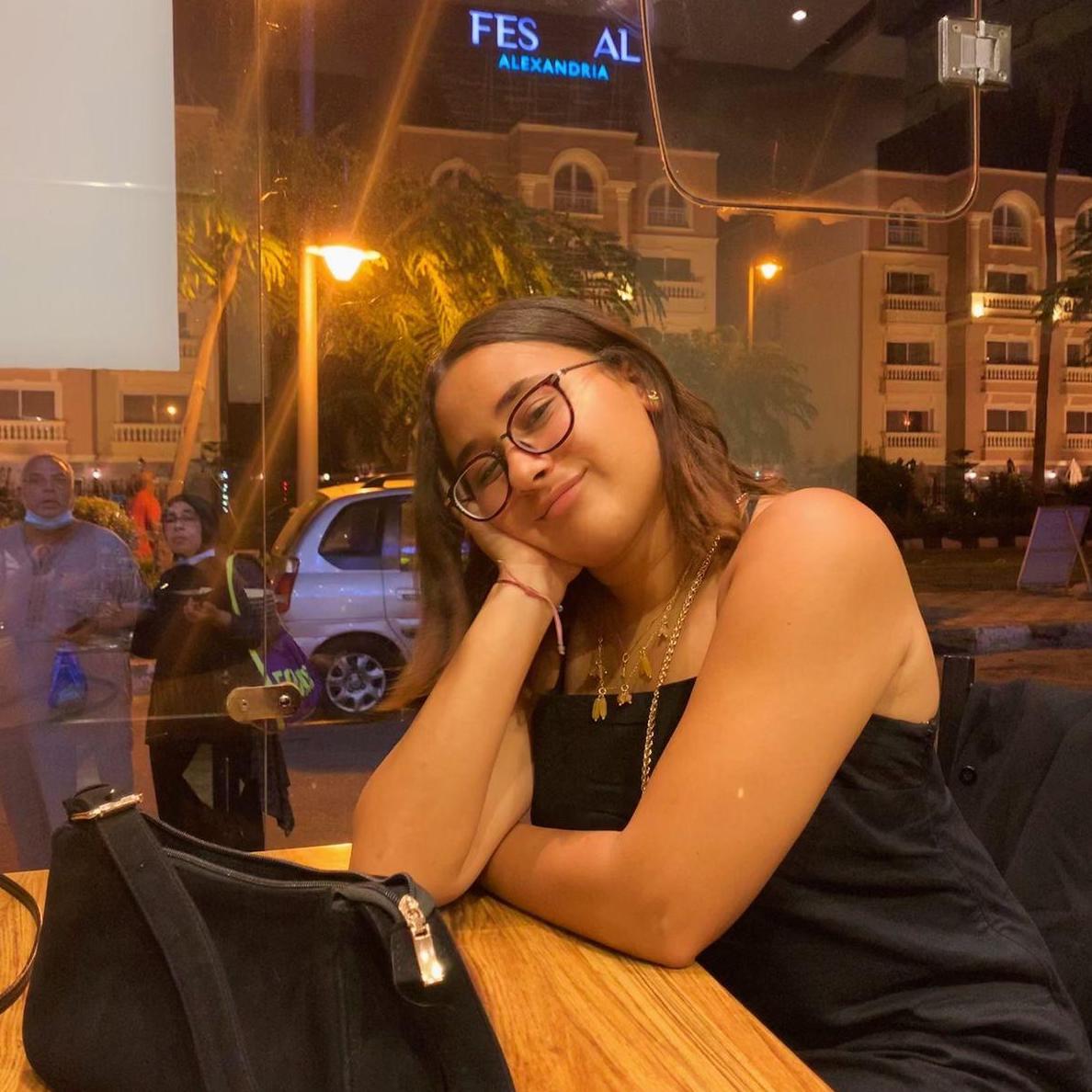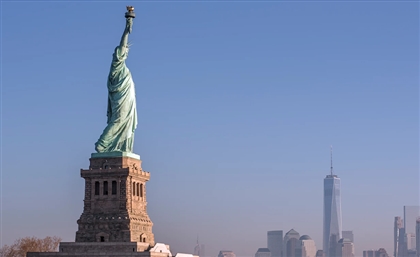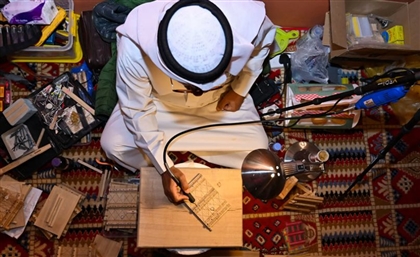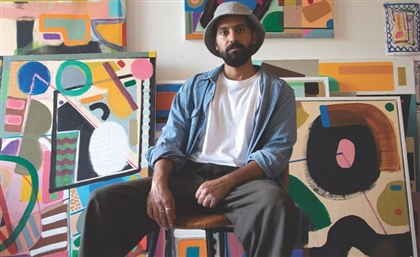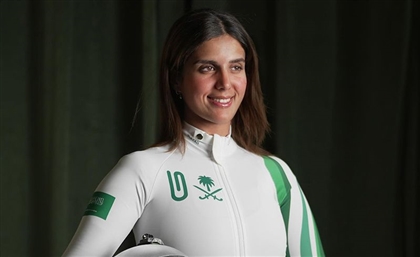Sauntering Through Siwa: A Two-Girl Quest in the Oasis of the West
We went on an adventure in Siwa, burning ourselves in hot springs, climbing fortresses and partying.
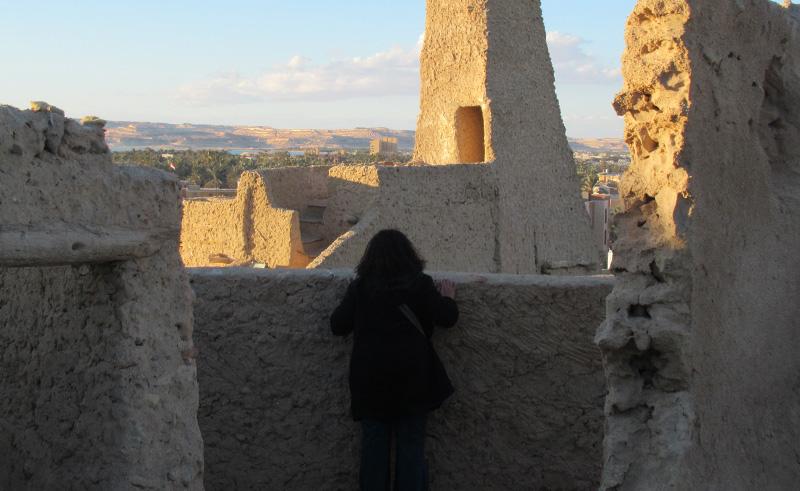
Originally Published on August 6, 2024
When someone tells you they’re going on an impromptu trip to Siwa at the last possible moment in their mid-year break from uni, or in other words impulsively venture into the Western desert in the throes of winter, there are a number of things you could ask. A slightly too high pitched “Oh”, paired of course with a pained smile, is an appropriate response. Kinder-hearted people could genuinely inquire into said traveller’s, who by now you should have gathered is me, the writer, well-being. Others could convince you not to do it and to maybe head to Sahel for a weekend. For some reason, nobody warned me about the weather. Somebody should’ve warned me about the weather.
What I got, repeatedly, more times than I can count was, “JUST you and Sarah?”
As someone who mostly, nearly exclusively, travelled with my family (I am an Egyptian girl with an Egyptian dad), the intricate social rulings of travelling with friends are often lost on me. But I did know one thing: that one trip I took Dahab with a mismatched group of friends nearly pushed me off some mountain in Sinai, and I was not willing to recreate that scene on Siwa’s Gabal Al Mawta (yes, literally ‘Mountain of the Dead’).
I now know travelling with a single good friend is the best flocking decision you could make. Because on this trip, Sarah and I were together when we needed a laugh, tolerant when we screamed at each other (you can’t convince me you haven’t screamed at anyone when put in a confined space with them for 2+ days - it’s normal, okay?), and alone when we needed to be alone. In a group, someone has to sacrifice. In a pair, there were few enough of us that we could do what we wanted. Including disappearing off the grid in non-touristic destinations we could only explore on our own. And I cannot compare travelling with your best friend to travelling with a boyfriend, mostly because I have no idea what the latter would be like (again, Egyptian girl, Egyptian dad), but also because your girls come first and all that (the dismissive tone is an inability to accept the vulnerabilities of the purest form of love, which is the one you share with your girls).
And so, in the span of maybe 2-3 days where both of us hardly made it out of bed to grab our debit cards from our purses, Sarah and I put together the Siwa trip whose fantasy kept us alive through finals. It was almost miraculous; we made a promise to ourselves, and saw it through. This has, as is natural to any first-born daughter who is always somehow shielded from the terror of true joy, never happened before.
The Trip
Sarah and I made it to Siwa at 5 AM, after heading out on a minibus from Alexandria at 11 PM the night before. Two hours earlier than our ETA, freezing our butts off despite being in our biggest coats, hair absolutely dishevelled and eyes barely a quarter open, we rode in the back of a tricycle (these tricycles were henceforth be referred to as toktoks - it’s what the locals call them, get with it *nail emoji*) with our luggage and headed through the pinching January air to our hotel. Or shall I say our super lowkey super niche ecological guesthouse, Tatrert.
After a trip that, even at the crack of dawn, was a sight for sore eyes (and sore they were from the cold), we made it to our beckoning abode - two hours before we said we’d arrive. Hesitant and ashamed for having to ring up a man at 5 AM yet again (if my Egyptian dad sees this, I’m kidding), I called Abu El Qassem, the Siwan groundskeeper who was soon to grow into the love of both Sarah and I’s lives. He saved the day, let us into our room, and the rest was history.
Seeing as our plans to sleep on the bus were of course discarded in favour of bewilderment with the road and a playlist of Najat El Saghira’s best, we slept in most of our first day there. By the time we finally rolled out of bed, the 3 PM sunlight was pouring through our bedroom window and we decided to explore. A few calls and three outfit changes later, we were in the back of yet another toktok, on our way to Siwa’s Mountain of the Dead.
Gabal Al-Mawta
As ominous as it sounds, the Mountain of the Dead, or Gabal Al-Mawta, is where the ancient Egyptians of Siwa kept their deceased. It’s a massive hike, laced with the eerie air of the withstanding legacy of what was. After evading countless grave openings (which is, yes, terrifying) and potholes, we managed to make it to the top of the mountain and enjoy a calm view of the nature below. We were, naturally, too tired to talk, but I’m sure that even if we had the energy, the view would’ve left us speechless.
On our way down, a wandering local asked us if we had been inside a tomb yet. Having not yet had the pleasure of exploring our ancestors’ eternal resting places, we followed him into one of the pharaonic tombs - the tomb of Mesu-Isis. 20 minutes later, we emerged, gawking at the still-colourful inscriptions on the walls and at the fact that we had just unknowingly spent 20 minutes in a tomb. Months later, the image of the Goddess of the Sun on the ceiling remains engraved in my brain. Sarah and I agreed that we, as Egyptians, tend to forget the simple beauty our ancestors breathed into everything.
By the time we shifted our concentration to the present-day, Sarah and I realised we were famished. Absolutely starving, and by extension, hangry. So we averted our eyes from the beautiful embroidered shawls dancing to the wind at the bottom of the mountain, and quickly headed to the city centre.
Those Who Visit the Fortress of Shali Can’t Leave
Now, we knew the city centre would be where we would find the biggest meeting of modern Siwan culture, but we couldn’t have possibly imagined it would also combine heritage that dates back centuries. You see, Siwa’s city centre is commonly referred to as ‘Shali’, a moniker we couldn’t decipher up until the moment our toktok pulled up to our destination. Shali is a fortress, but rather than being swept to the sidelines, hidden out of sight, like most of the artefacts that surround us, it is celebrated as the crown jewel of Siwa, local craft shops pouring out of it as extends its strings throughout the city.
Whenever we could (i.e.: whenever we were confident our legs could carry us there after our morning hikes), we would head to Shali. Not only because the local craft market offered a genuinely expansive array of handmade products we could hardly resist, but because there was something almost addictive about strolling through the endless pathways of that abandoned fortress, breathing in its air as if we always have.
Now, I know I said the Shali market was entirely unique, but like some animals are more equal than others, some shops were more rewarding than the rest. If you take a closer look at the rug shop at the very entrance of the market, in between handwoven tapestries, you’ll notice a small population of humanoid figurines crafted out of palm leaves. Each clad in its own outfit, hairstyle, and a distinct deity-resemblant demeanour, these figurines are handcrafted by the shop owner, who treats each like his own kin - but might be willing to forsake them to worthy shoppers. You must promise to honour his creations, though, whether on a keychain, in your car or hanging from your bag.
The second store Sarah and I enjoyed immensely was at the very end of the market, right by the entrance to the fortress itself. At first, its fluorescent hospital-resemblant white light was slightly discouraging, but we were too intrigued by an array of mountainous stone fragments and shelves filled with artefacts that seemed to look over a century old not to explore. We strolled through the expanse of the shop, awed by these artefacts of a culture we don’t hear much about, and aching to touch everything. It seemed as though everything we touched pulsed with a human power, the narrative of a people who don’t really talk about it.
I was standing, dumbfounded, in front of a tapestry of a traditional Siwan dress consisting of black and white silk intricately adorned with a plethora of symbols, shells, and whatever accessory the maker could get their hands on, when a man approached me. I’m convinced I felt his air of wisdom before he reached me, because when I turned around, I was face to face with this white-thobe-clad old man with a white beard who looked like he had just materialised behind me. This is probably the result of my elementary school obsession with Harry Potter leading me to look for Dumbledore wherever I go, because the man was just the owner of the shop.
He told me the dress I was gawking at was a traditional Siwan wedding dress, and that the women of a bride’s family spent months embroidering it by hand ahead of the wedding. When I wondered about the symbols on the dress, he told me these were the letters of the Siwan Amazigh language, their spoken tongue, but that no one actually knew how to read them. Here existed a language that was preserved only in its people’s memory, and yet they continued to celebrate the symbols that carried it, even if they didn’t understand them.
Following our super casual conversation about wedding dresses, the old man invited Sarah and me to tea around his mid-shop workshop table. Naturally, we couldn’t refuse his hospitality, and we took our seats. He started telling us about his work, about how he uncovers forgotten items and attempts to nurse them back to life for others to use. He complained about the redundancy of the souvenir market in Siwa, and why he tries to give people a different memory of the city in the form of collected antiques, unique handmade goods, and artefacts of nature, whilst maintaining the balance of the environment. Throughout the trip, the memory of this man became the lens through which I viewed Siwa.
I asked him about funerals. “When someone dies, the city goes quiet for three days. Shops close down, and nearly everyone visits the mourning family. This is the way our community works,” he told me, “Recently, though, times have been tough. Not everyone can afford to close their shops in the event of a death, especially during the high season.” Despite how strongly the people of Siwa try to maintain their seclusion from modernity, its effects find their way into their lives.
Return to Tatrert - a Love Letter to Abo El Qassem
The first night, during the search for a toktok to take us back to our hotel, I got a call from an unknown number. When I picked up, I was barely able to decipher who it was - some man called Abo El Qassem, who told us he was the groundskeeper of Tatrert. He told us that he’ll always be a call away, eager to help us with our trip-planning and transportation if need be, and he invited us to a party at the camp next door to our guest house.
“So, we’re invited to a party,” I told Sarah as I hung up.
“A party? Already?” she understandably wondered, “What kind of party?” So far, we’ve noticed the culture in Siwa is somewhat quiet and conservative. I mean, the only local women we’ve seen were covered from head to toe in black. We didn’t necessarily think of it as party central.
Yep, we’re cool already,” I said, “I think we should go.”
Abo El Qassem said to call him when we got there. So we did, he waited outside for us while we changed into party attire (an exaggeration - we just exchanged our bags for smaller ones), then we headed to the camp next door for the party.
The party in question consisted of Abo El Qassem’s friends sitting in a semicircle, playing a few instruments (oud included) and singing the songs they knew by heart as tourists danced around them. Since Sarah and I were definitely not about to join in on the dancing, we observed the intricate balance of the two groups: extremely conservative men who seemed to let down their guards and tourists who simply didn’t care about the customs of the place they were in. Why were these men suddenly so cool? Why are their women different from these women in the party? How do their women feel? The concealment, bordering erasure, of Siwan women loomed over my thoughts throughout the whole trip.
At some point, Sarah and I separated from the party and sat down on one of the logs surrounding the campfire. Note: never try to light a cigarette from a campfire because you might accidentally melt your face off and no amount of nicotine is worth that sacrifice. It was around this time that we remembered that we have a fireplace in our guesthouse, and so we decided to put our noses up and exit the party like we have cooler things to do (the cooler things in question where to huddle up by the fireplace Abo El Qassem desperately tried to light like 90-year-old ladies missing their crochet needles).
In the time Abo El Qassem very kindly spent trying to light our campfire (2 hours), Sarah and I ended up finding out a lot more about him than we expected to. We asked him if his children learned the Siwan Amazigh dialect in school, and he said they only learned Arabic, but spoke Amazigh at home. Again, the wonder of this language only preserved in people’s minds. At some point, as it neared 12 AM Abo El Qassem told us he had to head home or his wife - “El Gama’a” would beat him, asked us what we were doing for dinner tomorrow, told us to make no plans, and left.
The next night, we came home to find him waiting for us, changed quickly, and went with him to dinner, where he wined and dined us (by “wine” I mean mango juice - this is Siwa after all), and, a true gentleman, refused to even let us reach into our bags to pay - insisting that “el hesab youm el hesab”. Then, the ultimate dinner and a show, Abo El Qassem insisted we go to another party, where he and his friend literally serenaded us. They played a romantic song, the writer of which expresses love for their partner, and plugged our names into it while we blushed.
It’s Freezing - Pack a Swimsuit
When I told Sarah to pack a swimsuit for our winter trip, she was understandably concerned. We were already cold in Alexandria/Cairo, so why would a trip to the icy middle of the desert necessitate the bringing of a swimsuit? Well, because of Siwa’s springs of course.
Since essentially the minute we got there, people have been asking Sarah and me if we visited the salt lakes yet. At first we said we’d do it - they’re the #1 picturesque tourist attraction in Siwa and where everyone and their mother has gone to take a picture in the crystal clear waters and shimmering salt and make it their Facebook profile picture. We needed new profile pictures to, we wanted to go. But we were told stories about how cold it was and ended up procrastinating the trip till our promised summer Siwa trip (which has not yet happened but will (I am likely to be lying to myself and the reader).
Anyway, in favour of the icy waters, we ended up going to one of Siwa’s hot springs - arguably Siwa’s best. Because we were unknowingly the nepo babies of Siwa on this trip, it turned out the hot spring resort in question was A) a 3-minute walk from the beautiful bed in our guest house, B) owned by my friend’s dad and C) my friend was also in Siwa at the time. So we all got to hang out in her dad’s hot spring which is like having a pool party but much cooler and more lowkey. You wouldn’t get it unless you were there.
We visited the hot spring resort, Aman Yakden, in our swimsuits but also in three additional layers over them, not perceiving how we would possibly undress in this weather. But my friend, Frida, graciously led us to the fireplace where we (literally) warmed up for the feat that awaited us. We talked about everything - the trip, boys, Frida and I’s memories together, Sarah and I’s memories together, the memories Frida and Sarah were soon to make together, etc. Then we timidly made our way through the wafting steam to the spring.
Freezing and unable to trust that anything could possibly be hot enough to keep us warm in this weather, other than the array of campfires we have come to chase around the city of course, we dipped our toes in the water. It was scalding hot. Given the temperature difference, that toe-dip was akin to accidentally holding a hot pan with your feet (some Egyptian mother has done it I’m sure), but much more inviting. We dropped ourselves into the water.
At first, we couldn’t stop diving into it, even though it smelled slightly like sulfur (that is the source of Siwa’s hot springs - sulfur). Then, we sat by the edge (yes, there’s a seat, it’s like a jacuzzi), and continued our conversation about anything we could get our hands on. At some point, as I dipped in and out of the water to catch a breeze, Frida and Sarah collectively narrated the entire plot of Saltburn to me. Which I can only hope is an original experience.
The water was wonderful; at some point, it became so hot that we simply had to indulge in some iced lemongrass (which, by the way, would put the matcha craze to shame). We could hardly get enough of it. In fact, the only reason we got out is because the warmth was starting to make us drowsy, and by that time it was nearing midnight. Reluctant, we dragged ourselves out of the water and into the shower, fearing that we’d lose the heat. To our surprise, however, the warmth stuck well after we had left the changing rooms, and even until we put our conversation under wraps and went to bed.
Naturally, we went back for more. I wondered why everyone who went to Siwa refrained from staying in Aman Yakden, where they could regularly dip themselves into the hot spring, and only came to the conclusion that the resort would become a sort of Hotel California guests could never leave. Only this time there was no paranormal activity involved; only the warmth of the spot’s spring and people.
- Previous Article Inside Architect Ahmad Fayyad’s New Studio in Heliopolis
- Next Article Saudi Banks Issue USD 2.37 Billion in Home Loans in February







